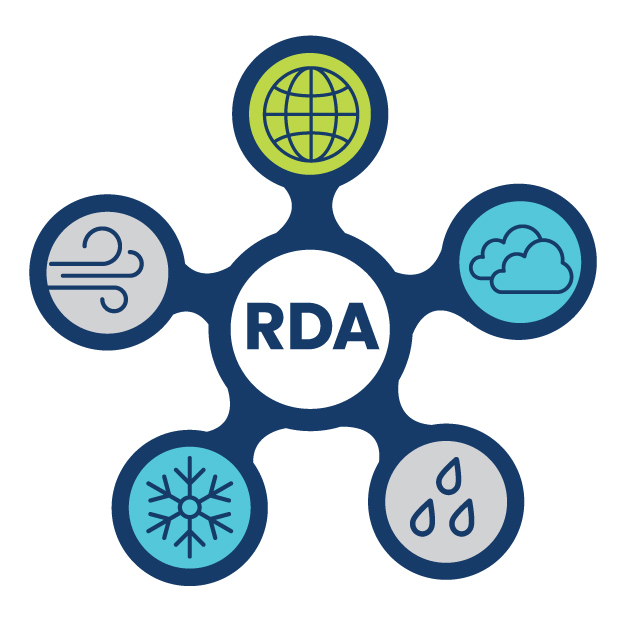
NOAA CPC Morphing Method (CMORPH) Global Precipitation Analyses, Version 1.0 (0.25 degree, 3-hourly resolution)
d502003
| DOI: 10.5065/B4B7-KB23
This historical dataset is recommended for ancillary use only and not as a primary research dataset. It has likely been superseded by a newer, improved dataset.
NOTE: This dataset has been superseded by the NOAA Climate Data Record (CDR) of CMORPH version 1.0, which is available in RDA dataset ds502.2. Users are advised to transition to this updated dataset.
This dataset contains version 1.0 of the NOAA CPC MORPHing technique (CMORPH) global precipitation analyses covering the period January 1998-present at 0.25 degree, 3-hourly resolution. Version 1.0 comprises reprocessed data using a fixed algorithm with inputs of the same versions. In contrast, CMORPH Version 0.x is generated using an evolving algorithm with inputs of changing versions over the entire data period. The major differences between Versions 1.0 and 0.x are the following:
- Version 1.0 covers the entire TRMM/GPM era from January 1998 to the present, while Version 0.x started from December 2002.
- Version 1.0 is generated using a fixed algorithm and inputs of fixed versions to ensure best possible homogeneity, while Version 0.x has been produced using an evolving algorithm and inputs of changing versions, and therefore presents substantial inhomogeneities, especially over the earlier years of its operations (2003-2006).
- Version 1.0 include the raw, satellite only precipitation estimates as well as bias corrected and gauge-satellite blended precipitation products, while Version 0.x only has the satellite-only products.
CMORPH produces global precipitation analyses at very high spatial and temporal resolution. This technique uses precipitation estimates that have been derived from low orbiter satellite microwave observations exclusively, and whose features are transported via spatial propagation information that is obtained entirely from geostationary satellite infrared data. Precipitation estimates are derived from the passive microwaves aboard the DMSP 13, 14 and 15 (SSM/I), the NOAA-15, 16, 17 and 18 (AMSU-B), and AMSR-E and TMI aboard NASA's Aqua and TRMM spacecraft, respectively. These estimates are generated by algorithms of Ferraro (1997) for SSM/I, Ferraro et al. (2000) for AMSU-B and Kummerow et al. (2001) for TMI. Note that this technique is not a precipitation estimation algorithm but a means by which estimates from existing microwave rainfall algorithms can be combined. Therefore, this method is extremely flexible such that any precipitation estimates from any microwave satellite source can be incorporated.
CMORPH Version 0.x data may be accessed from RDA datasets ds502.0 (data prior to June 2014) and ds502.1 (June 2014-present).
| Precipitation Amount | Precipitation Rate |
Latitude Range: Southernmost=59.875S Northernmost=59.875N Detailed coverage information Detailed coverage information 0.25° x 0.25° from 0.125E to 359.875E and 59.875S to 59.875N (1440 x 480 Longitude/Latitude)
 This work is licensed under a Creative Commons Attribution 4.0 International License.
This work is licensed under a Creative Commons Attribution 4.0 International License.